Sydney Airport Bundle
Who Really Owns Sydney Airport?
Unraveling the ownership of Sydney Airport, a critical piece of Australian infrastructure, is key to understanding its future. From its humble beginnings as Mascot Aerodrome to its current status as a global aviation hub, the airport's journey reflects significant shifts in ownership and strategic direction. Understanding who owns Sydney Airport is crucial for anyone interested in the financial and operational aspects of this major asset.
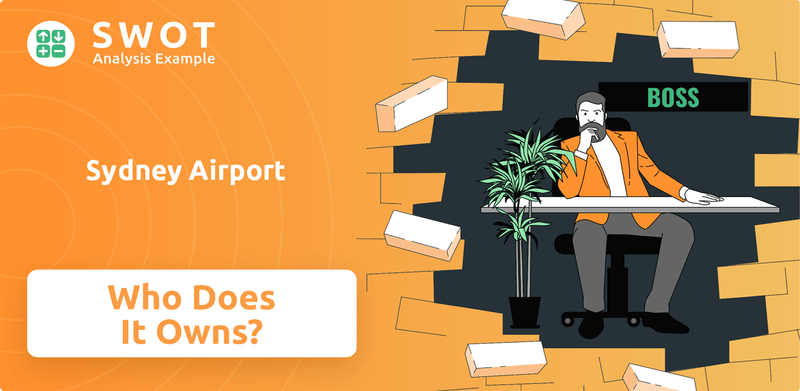
Since its privatization in 2002, the Sydney Airport SWOT Analysis reveals a complex ownership structure, dominated by institutional investors and financial entities. This evolution has shaped the airport's operations, strategic decisions, and financial performance. This deep dive into Sydney Airport ownership will explore the key players, the driving forces behind ownership changes, and the implications for all Sydney Airport stakeholders, providing insights into who controls its future.
Who Founded Sydney Airport?
The initial establishment of Sydney Airport, then known as Mascot Aerodrome, in 1920, did not involve traditional founders in the private equity sense. Instead, the Australian government initiated the project. Early ownership and development fell under the purview of the government, specifically the Department of Civil Aviation.
Therefore, there were no individual equity splits or shareholdings in the early stages. The government's primary objective was to build essential aviation infrastructure for the nation. Funding and development were managed through public expenditure and policy decisions, rather than private investment rounds. There were no angel investors or early agreements like vesting schedules.
Ownership disputes or buyouts, as seen in the private sector, did not occur during this period, as the airport remained a public asset. The founding 'team's' vision, driven by government policy, focused solely on establishing and expanding a national airport network. To understand more about the airport's beginnings, you can read the Brief History of Sydney Airport.
The early ownership of Sydney Airport was entirely within the Australian government's control. The Department of Civil Aviation managed its operations. This structure ensured that the airport's development aligned with national aviation policy and infrastructure needs.
- The airport's initial funding came from public funds, not private investment.
- There were no private shareholders or equity stakes in the early years.
- Government policy dictated the airport's expansion and operational strategies.
- The primary focus was on establishing a functional national airport network.
Sydney Airport SWOT Analysis
- Complete SWOT Breakdown
- Fully Customizable
- Editable in Excel & Word
- Professional Formatting
- Investor-Ready Format
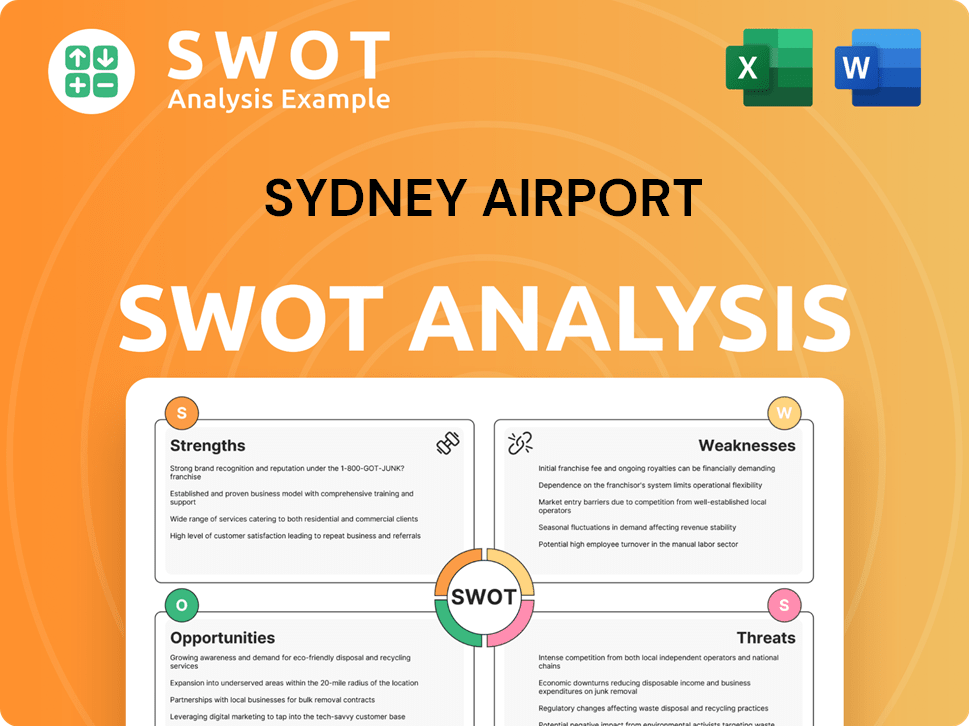
How Has Sydney Airport’s Ownership Changed Over Time?
The journey of Sydney Airport's ownership has been marked by significant transitions. Initially under the Australian government's control, the airport was leased in 2002 for a 99-year term to Southern Cross Airports Corporation Holdings Ltd (SXA), signaling its move towards privatization. This shift set the stage for its eventual listing on the Australian Securities Exchange (ASX) in 2006 as Sydney Airport Holdings Limited (SYD), establishing it as a prominent publicly traded company.
The ownership structure of Sydney Airport (SYD) evolved over time, involving a mix of institutional investors, superannuation funds, and individual shareholders. A pivotal moment occurred in 2022 when Sydney Aviation Alliance (SAA), a consortium of infrastructure investors, acquired Sydney Airport. This acquisition, valued at approximately A$23.6 billion, led to the delisting of Sydney Airport from the ASX, returning it to private ownership.
| Timeline | Event | Impact |
|---|---|---|
| 2002 | Lease to Southern Cross Airports Corporation Holdings Ltd (SXA) | Privatization begins; shift from public to private management. |
| 2006 | Listing on the Australian Securities Exchange (ASX) as Sydney Airport Holdings Limited (SYD) | Public trading commences; increased investor participation. |
| 2022 | Acquisition by Sydney Aviation Alliance (SAA) | Delisting from ASX; return to private ownership. |
As of early 2025, the Sydney Aviation Alliance (SAA) comprises key stakeholders. Understanding the marketing strategy of Sydney Airport provides further insights. Major members of the consortium include IFM Investors, holding a substantial stake, alongside Australian superannuation funds like AustralianSuper, Australian Retirement Trust, and UniSuper. Global Infrastructure Partners (GIP), a global infrastructure investor, also participates in the SAA consortium. This shift to private ownership by a consortium of long-term infrastructure investors and superannuation funds often emphasizes long-term capital investments and stable returns.
The current ownership of Sydney Airport is primarily held by the Sydney Aviation Alliance (SAA).
- IFM Investors is a significant stakeholder.
- Australian superannuation funds such as AustralianSuper, Australian Retirement Trust, and UniSuper are involved.
- Global Infrastructure Partners (GIP) also forms part of the consortium.
- This structure focuses on long-term investment strategies.
Sydney Airport PESTLE Analysis
- Covers All 6 PESTLE Categories
- No Research Needed – Save Hours of Work
- Built by Experts, Trusted by Consultants
- Instant Download, Ready to Use
- 100% Editable, Fully Customizable
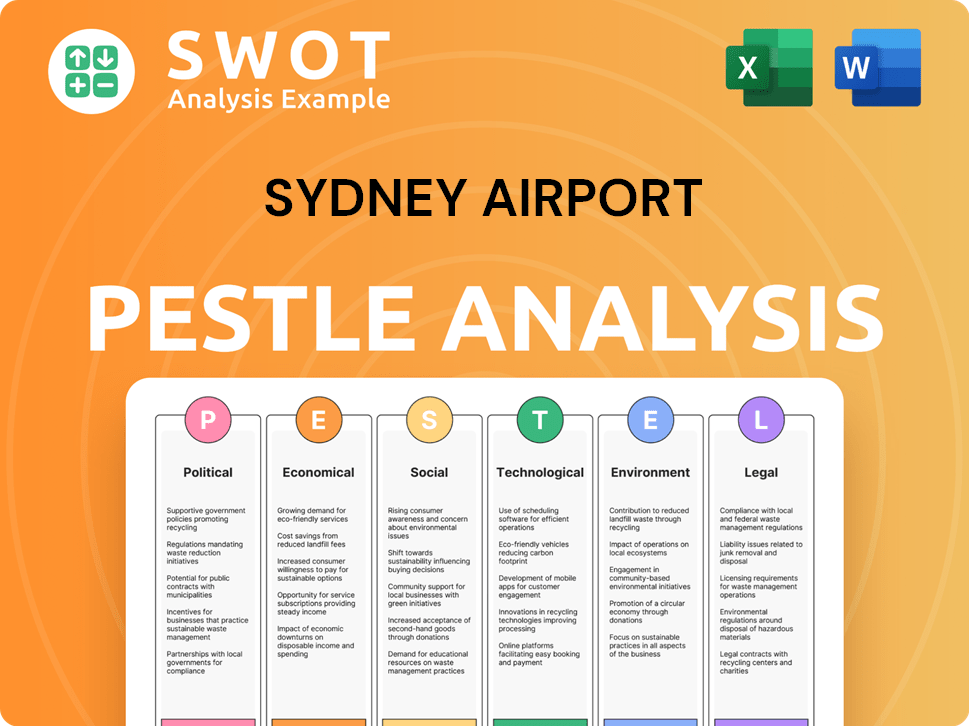
Who Sits on Sydney Airport’s Board?
Since the privatization of the Sydney Airport company in 2022, now operating under Southern Cross Airports Corporation Holdings Ltd, the board of directors is no longer bound by the public company governance rules of the Australian Securities Exchange (ASX). The board is principally composed of representatives from the Sydney Aviation Alliance (SAA) consortium members and independent directors. While specific details about individual board members and their affiliations as of early 2025 are not publicly available to the same extent as a listed company, it is understood that major shareholders like IFM Investors, AustralianSuper, Australian Retirement Trust, UniSuper, and Global Infrastructure Partners have representation on the board. This structure reflects a shift towards a more private equity-style governance model, focusing on long-term infrastructure investment strategies.
The shift to private ownership has changed the dynamics of Sydney Airport's management and oversight. The board's composition and decision-making processes are now primarily influenced by the consortium members' agreements. This structure prioritizes the interests of the major institutional investors involved. The shift away from public market scrutiny means that the Sydney Airport management operates within a framework designed for long-term value creation, with less emphasis on short-term financial reporting pressures. For those interested in understanding the financial workings behind this, consider exploring the Revenue Streams & Business Model of Sydney Airport.
| Aspect | Details | Implication |
|---|---|---|
| Board Composition | Representatives from SAA consortium members (IFM Investors, AustralianSuper, etc.) and independent directors. | Reflects a focus on long-term infrastructure investment and private equity governance. |
| Governance | Governed by agreements among consortium members; no public company governance requirements. | Less public scrutiny; decisions aligned with long-term strategic goals of major shareholders. |
| Voting Power | Typically, voting power is proportionate to equity stake; decisions often require supermajorities. | Ensures alignment among stakeholders and stability in strategic decisions. |
Sydney Airport's ownership structure is now primarily held by institutional investors through the Sydney Aviation Alliance. This shift away from public ownership has changed the management and governance of the airport. The key investors, including IFM Investors, AustralianSuper, and others, have significant influence over the airport's strategic direction.
- The board of directors is primarily composed of representatives from the consortium members.
- Voting power is generally proportionate to the equity stake held by each member.
- Decisions often require supermajorities, reflecting the long-term investment horizon.
- There are no public proxy battles or activist investor campaigns, typical of private ownership.
Sydney Airport Business Model Canvas
- Complete 9-Block Business Model Canvas
- Effortlessly Communicate Your Business Strategy
- Investor-Ready BMC Format
- 100% Editable and Customizable
- Clear and Structured Layout
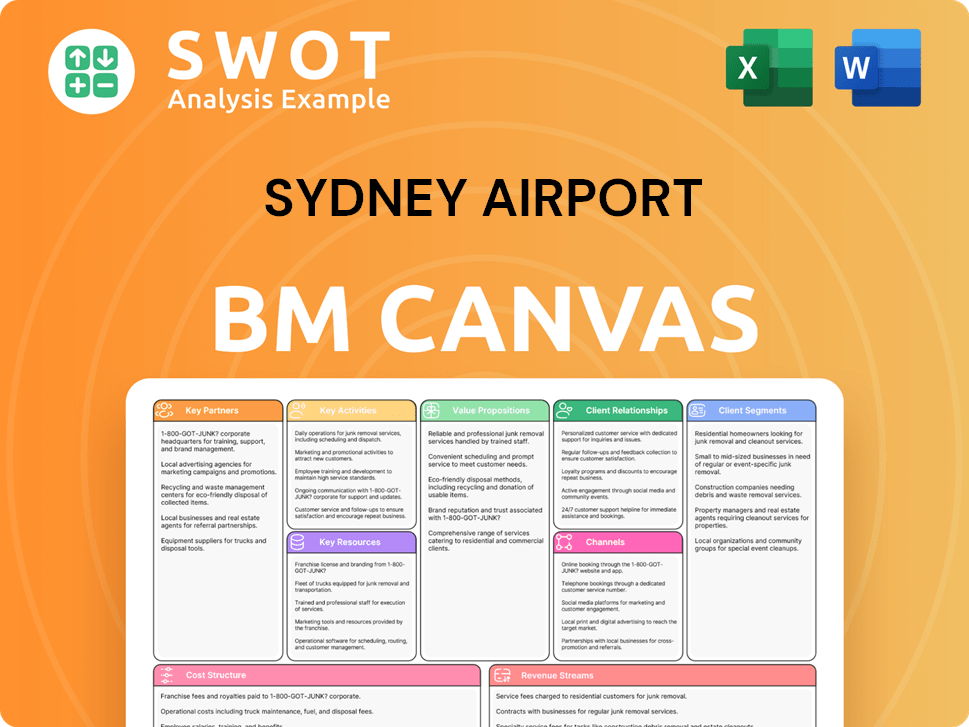
What Recent Changes Have Shaped Sydney Airport’s Ownership Landscape?
The most significant recent development in the Sydney Airport ownership landscape is its acquisition by the Sydney Aviation Alliance (SAA) in 2022. This transaction, valued at A$23.6 billion, led to the delisting of the airport from the Australian Securities Exchange (ASX), shifting its ownership from public to private hands. This move reflects a broader trend where major infrastructure assets are increasingly being acquired by consortiums of institutional investors, particularly superannuation and pension funds, seeking stable, long-term returns. The privatization of Sydney Airport company signals a strategic shift towards long-term operational efficiency and infrastructure development, as the focus moves away from quarterly earnings reports.
Since the privatization, there have been no public share buybacks or secondary offerings, as the company is no longer publicly traded. Leadership changes and strategic investments are now managed internally by the SAA consortium. This change in ownership structure aims to maximize returns for private equity and superannuation fund owners. The current ownership structure is designed for a long-term hold, and there have been no public statements regarding future ownership changes or a potential re-listing in the near term. For more insights, you can explore the Growth Strategy of Sydney Airport.
The Sydney Aviation Alliance (SAA) is the primary Sydney Airport owner. The consortium is composed of various institutional investors, including superannuation and pension funds. These investors are focused on long-term returns and strategic management of the airport's assets.
Sydney Airport's ownership structure is now private, following its delisting from the ASX in 2022. This shift allows the airport to operate without the pressures of public market scrutiny. The focus is now on long-term infrastructure development and operational efficiency.
Sydney Airport Porter's Five Forces Analysis
- Covers All 5 Competitive Forces in Detail
- Structured for Consultants, Students, and Founders
- 100% Editable in Microsoft Word & Excel
- Instant Digital Download – Use Immediately
- Compatible with Mac & PC – Fully Unlocked
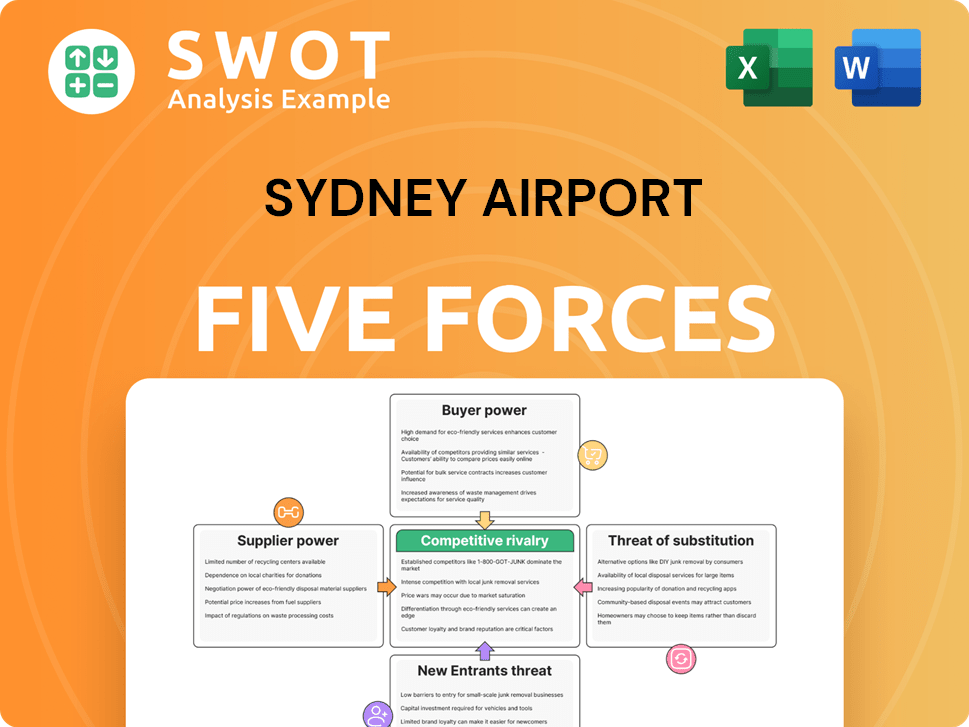
Related Blogs
- What are Mission Vision & Core Values of Sydney Airport Company?
- What is Competitive Landscape of Sydney Airport Company?
- What is Growth Strategy and Future Prospects of Sydney Airport Company?
- How Does Sydney Airport Company Work?
- What is Sales and Marketing Strategy of Sydney Airport Company?
- What is Brief History of Sydney Airport Company?
- What is Customer Demographics and Target Market of Sydney Airport Company?
Disclaimer
All information, articles, and product details provided on this website are for general informational and educational purposes only. We do not claim any ownership over, nor do we intend to infringe upon, any trademarks, copyrights, logos, brand names, or other intellectual property mentioned or depicted on this site. Such intellectual property remains the property of its respective owners, and any references here are made solely for identification or informational purposes, without implying any affiliation, endorsement, or partnership.
We make no representations or warranties, express or implied, regarding the accuracy, completeness, or suitability of any content or products presented. Nothing on this website should be construed as legal, tax, investment, financial, medical, or other professional advice. In addition, no part of this site—including articles or product references—constitutes a solicitation, recommendation, endorsement, advertisement, or offer to buy or sell any securities, franchises, or other financial instruments, particularly in jurisdictions where such activity would be unlawful.
All content is of a general nature and may not address the specific circumstances of any individual or entity. It is not a substitute for professional advice or services. Any actions you take based on the information provided here are strictly at your own risk. You accept full responsibility for any decisions or outcomes arising from your use of this website and agree to release us from any liability in connection with your use of, or reliance upon, the content or products found herein.